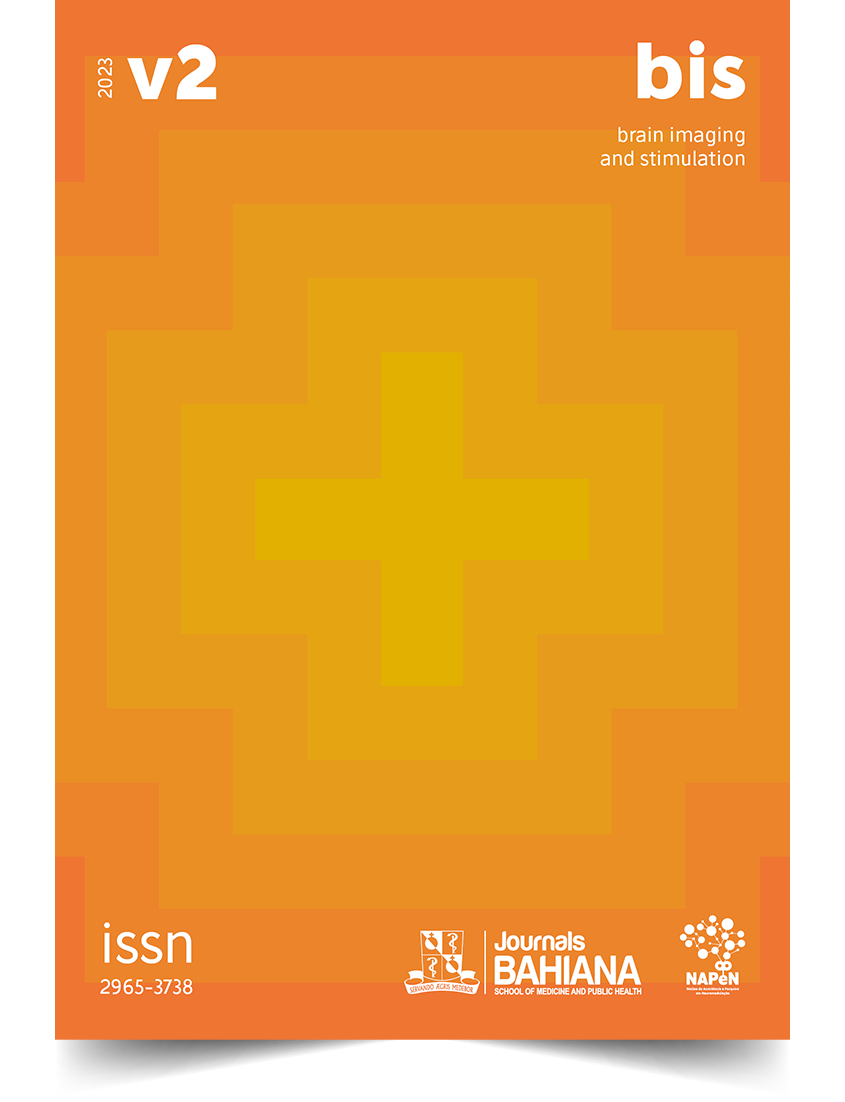A practical guide to the evaluation of the functional integrity of the corticospinal tract by transcranial magnetic stimulation in post-stroke patients
DOI:
https://doi.org/10.17267/2965-3738bis.2023.e5097Keywords:
Stroke. Stroke Rehabilitation. Corticospinal Tract. Transcranial Magnetic Stimulation. Single Pulse. Prognostic Factor.Abstract
INTRODUCTION: Transcranial magnetic stimulation (TMS) can be a particularly useful tool to assess the integrity of corticospinal tract (CST) in post-stroke patients, based on the motor evoked potential (MEP) of which we can determine the extent of brain damage and predict motor recovery after brain injuries. OBJECTIVE: To provide a practical guide to assess the functional integrity of the CST in the hand area of primary motor cortex (Hand-M1) using single-pulse TMS. RESULTS: A step by step procedure should be initiated with markings to find C3 or C4 from the 10-20 system, depending on which hemisphere is damaged, with the proper coil positioning at a 45° angle for we to properly find the MEP navigating from the original point. If no potentials are evoked at rest condition, MEP should be searched during a slight tonic contraction of the target muscle. If no voluntary movement can be produced in the affected muscles, facilitated MEPs should be searched with an isometric recruitment of the contralateral homologous target muscles. MEP will be considered absent if no visible muscle contraction is identified after the pulse. In addition, we can perform MEP search with electromyographic recordings for a peak-to-peak signal analysis. CONCLUSION: We can use this practical guide to assess the functional integrity of CST in Hand-M1 with single pulse TMS to consider a present or absent MEP and determine the extent of brain damage and predict a possible motor recovery after stroke.
Downloads
References
(1) Groppa S, Oliviero A, Eisen A, Quartarone A, Cohen LG, Mall V et al. A practical guide to diagnostic transcranial magnetic stimulation: report of an IFCN committee. Clin Neurophysiol. 2012;123(5):858-82. https://doi.org/10.1016/j.clinph.2012.01.010.
(2) Acharya JN, Acharya VJ. Overview of EEG Montages and Principles of Localization. J Clin Neurophysiol. 2019;36(5):325-329. https://doi.org/10.1097/WNP.0000000000000538.
(3) Di Lazzaro V, Ziemann U, Lemon RN. State of the art: Physiology of transcranial motor cortex stimulation. Brain Stimul. 2008;1(4):345-62. https://doi.org/10.1016/j.brs.2008.07.004.
(4) Di Lazzaro V, Restuccia D, Oliviero A, Profice P, Ferrara L, Insola A et al. Effects of voluntary contraction on descending volleys evoked by transcranial stimulation in conscious humans. J Physiol. 1998;508(2):625-33. https://doi.org/10.1111/j.1469-7793.1998.625bq.x.
(5) Muellbacher W, Facchini S, Boroojerdi B, Hallett M. Changes in motor cortex excitability during ipsilateral hand muscle activation in humans. Clin Neurophysiol. 2000;111(2):344-9. https://doi.org/10.1016/s1388-2457(99)00243-6.
(6) Kiers L, Fernando B, Tomkins D. Facilitatory effect of thinking about movement on magnetic motor-evoked potentials. Electroencephalogr Clin Neurophysiol. 1997;105(4):262-8. https://doi.org/10.1016/s0921-884x(97)00027-1.
(7) Pascual-Leone A, Brasil-Neto JP, Valls-Solé J, Cohen LG, Hallett M. Simple reaction time to focal transcranial magnetic stimulation. Comparison with reaction time to acoustic, visual and somatosensory stimuli. Brain. 1992;115(1):109-22. https://doi.org/10.1093/brain/115.1.109.
Downloads
Published
Issue
Section
License
Copyright (c) 2023 Rhayssa Muniz Albuquerque, Gabriel Barreto Antonino, Ana Cecília Ribeiro do Nascimento, Bárbara Sousa Neves de Lima, Fernanda Albuquerque Lima, Daniel Gomes de Melo, Camilla Santos Araújo, Sérgio Vitor Carvalho Guerra, Rodrigo de Mattos Brito, Kátia Karina do Monte Silva Machado

This work is licensed under a Creative Commons Attribution 4.0 International License.
This work is licensed under a Creative Commons Attribution 4.0 International License.



